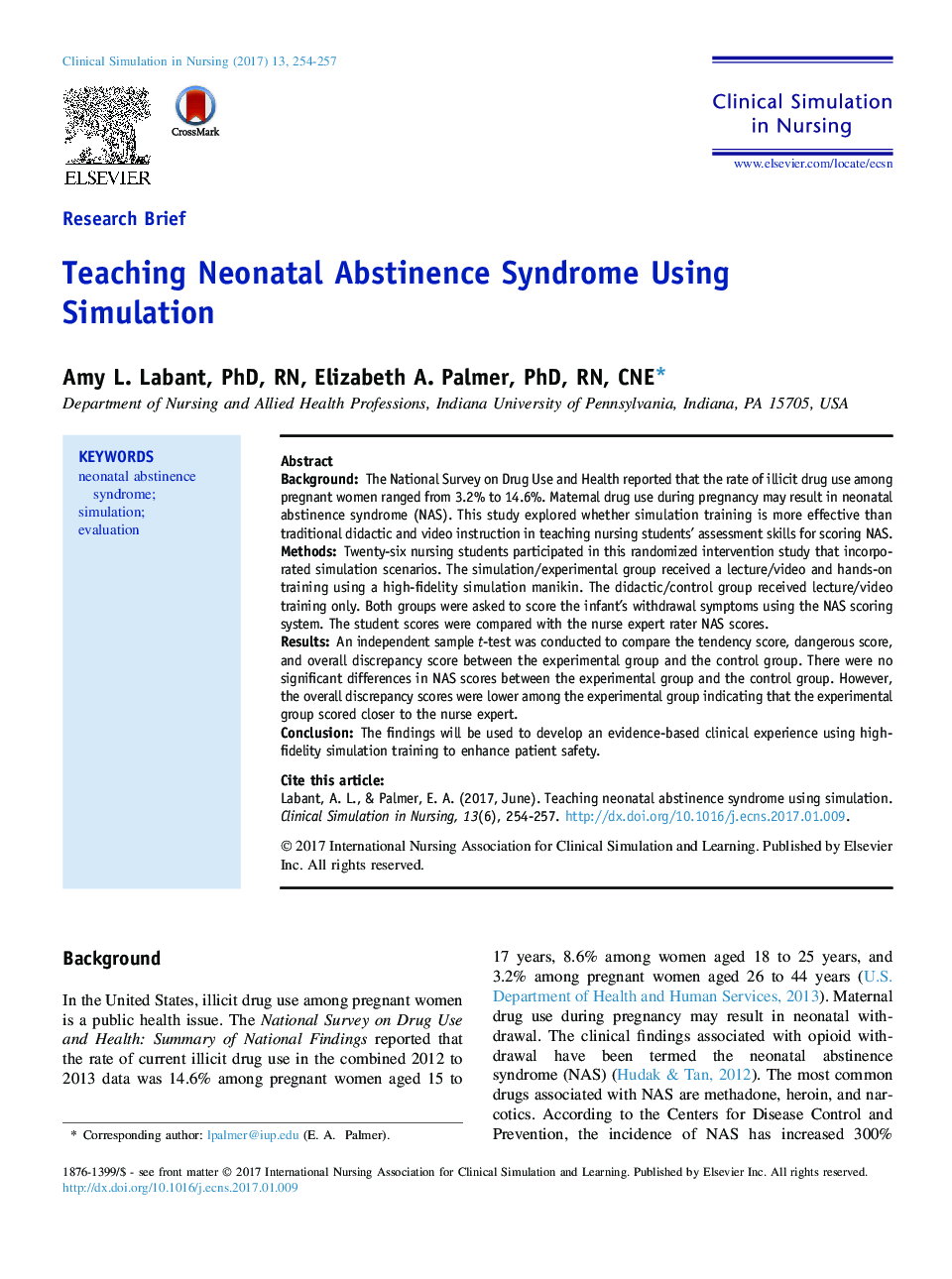| Article ID | Journal | Published Year | Pages | File Type |
|---|---|---|---|---|
| 5567505 | Clinical Simulation in Nursing | 2017 | 4 Pages |
â¢This was an innovative simulation training for teaching neonatal abstinence syndrome.â¢The outcomes of this study support the use of simulation training to improve student skills that enhance patient safety.â¢Student performance was evaluated using an applicable theory or framework.
BackgroundThe National Survey on Drug Use and Health reported that the rate of illicit drug use among pregnant women ranged from 3.2% to 14.6%. Maternal drug use during pregnancy may result in neonatal abstinence syndrome (NAS). This study explored whether simulation training is more effective than traditional didactic and video instruction in teaching nursing students' assessment skills for scoring NAS.MethodsTwenty-six nursing students participated in this randomized intervention study that incorporated simulation scenarios. The simulation/experimental group received a lecture/video and hands-on training using a high-fidelity simulation manikin. The didactic/control group received lecture/video training only. Both groups were asked to score the infant's withdrawal symptoms using the NAS scoring system. The student scores were compared with the nurse expert rater NAS scores.ResultsAn independent sample t-test was conducted to compare the tendency score, dangerous score, and overall discrepancy score between the experimental group and the control group. There were no significant differences in NAS scores between the experimental group and the control group. However, the overall discrepancy scores were lower among the experimental group indicating that the experimental group scored closer to the nurse expert.ConclusionThe findings will be used to develop an evidence-based clinical experience using high-fidelity simulation training to enhance patient safety.
